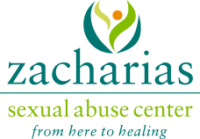Discussing child abuse and assault may be one of the last topics on anyone’s ideal list, however, talking about it may be just what is needed to keep more children safe from trafficking. One of the specific things that needs to be talked about in greater detail not just with the public, but also with children, is the idea of grooming and how it can have short and long-term effects on the children that experience it.
Last week, we covered the basics of human trafficking and some statistics. Now, how does trafficking actually happen? Well, it starts with the grooming process. According to the National Society for the Prevention of Cruelty to Children, grooming is the process by which adults and even older children begin to develop a connection with a child in order to gain their trust. Once this trust is established, that person can then begin to manipulate the child into doing things in which they may not have otherwise engaged. This fostering of a relationship and building of trust makes it much more difficult for a child to say no or stand up for themselves because they feel like someone they trust or someone that cares about them would not ask them to do things that are wrong or hurtful. This relationship may not just be with the child; those that engage in grooming behavior may also build relationships with family members or friends to further build that level of trust. Sexual violence is all about power and control, and several tactics are used to gain a victim’s trust. The power and control wheel below shows some strategies perpetrators will use to hold power over their victims.
Grooming has existed well before the internet, however, the internet makes connection with more people easier and faster. Because children are digital natives or have grown up around the internet and social media, they are much more inclined to use it and it becomes increasingly more difficult to monitor with numerous individual devices. Those seeking out children may be representing themselves as persons wanting to engage in a romantic relationship with the child, a mentor, a parental or dominant figure in their life, etc. Children that are looking for a connection with others due to a lack of connection in their own lives are at a larger risk of grooming behavior because they want so badly to be admired by someone else or potentially validated when they are feeling as though this is lacking in their life.
There are some signs grooming may be happening, and there are a few things to look for in interactions between children and adults to catch any potential grooming. The adult may try to spend extra alone time with the child, spend time with them when they are either undressed or showering, buying special gifts without a reason, finding opportunities to spend time alone with them, like tutoring or coaching, always listening to the child/ victim and being willing to help, as well as offering to buy drugs or alcohol for them. Any of these could be a small sign that something deeper is happening in that relationship.
So how is someone brought into trafficking? The danger seems like it should be clear. However, traffickers, pimps, or ‘johns’ use manipulation and the other strategies in the power and control wheel to gain their trust. This may involve gifts, spending time together, and finding what vulnerabilities the victim has. They will slowly ask the victim to do things for them. It could start small, and then develop into sexual acts. Oftentimes, the victim is brainwashed and does not know that anything bad is happening to them. Soon enough, they think everything happening is normal, and feel like the trafficker cares about them.
Signs of trafficking:
The Polaris Project points out that there might not be any visible signs of trafficking in a victim. However, there are some signs that can hint someone is in a bad situation that needs to be looked into further. This includes:
- New, unexplained luxury items (especially if the victim is in a poor economic situation)
- Tattoos, particularly symbols
- Multiple phones
- Malnutrition, chronic illness, vision or dental problems
- Unusual absent patterns
- Delayed presentation for healthcare
- Lack of knowledge about the community
There are several risk factors that increase someone’s chance of becoming victimized by a trafficker. It is important to remember that risk factors do not automatically mean they will be trafficked, but it can increase their chance. Some factors include being part of the LGBTQ+ community, being a minority/ person of color (POC), drug use, young age, and running away or being homeless. A third of youth are approached by a trafficker within 48 hours from running away. Youth make up 30% of reported survivors, most commonly aged 11-14 years old. This can be scary to learn, but it is so important to be aware of as we bring more awareness to this topic.
One of the best protective factors against human trafficking is talking with your children and family about what human trafficking looks like and grooming techniques. Other protective factors are having open communication with your children and talking about what healthy relationships look like, learning about online safety, and supporting local organizations who are working to prevent human trafficking in your communities.
Human trafficking is an extensive, complicated issue, but there are several organizations actively working against it! Next week, we will cover what human trafficking looks like here in Lake County, so come on back if you are interested in learning more!
Further information, resources, and hotlines:
Written by Christine Berry, Director of Services, and Sarah Brennan, Activism and Volunteer Coordinator.
All ZCenter blog posts are written by state certified staff, interns, and volunteers. For questions on authorship or content, please email kjones@zcenter.org.

